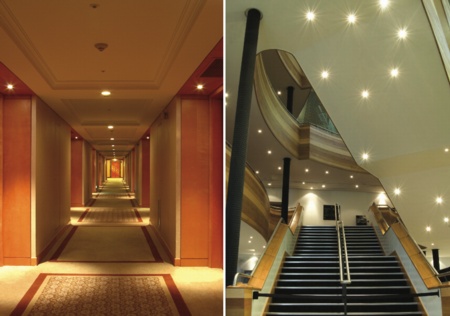Enlightenment on LEDs

Recent advancements in LED technology have meant it is rapidly coming into the mainstream. Jocelyn Mottram sheds some light on the latest developments.
Artificial lighting is a major issue in energy management. It currently accounts for around a fifth of all electrical energy consumed worldwide, and by 2030 it is expected that this demand will be a huge 80% higher.
Understandably then, over the coming years EU legislation will enforce a gradual phase-out of the most inefficient lighting products to reduce CO2 emissions. Already in the UK, we have seen the phasing out of traditional larger incandescent lamps in a bid to save a million tonnes of CO2 a year.
However, there are huge savings to be made by opting for more energy-efficient lighting solutions sooner rather than later. For the modern building operator, now is time to make the switch.
What lamp types and lighting solutions should building operators be looking at? Well, one product that has been undoubtedly shining ahead of all others in recent years is the LED.
LEDs have been used in emergency, street and retail lighting for many years, but big improvements in light output and price reduction are resulting in manufacturers and suppliers developing LED technology for both domestic and general commercial office lighting applications.
LED lighting technology can deliver energy savings from day one, helping some larger organisations to meet their Carbon Reduction Commitment (CRC). This is especially important given that the CRC recently launched its annual official league table, ranking UK businesses in terms of their performance in relation to early actions taken to reduce carbon emissions. Additionally, most LED lamps and LED fittings also comply with the requirements of Part L of the Building Regulations (Conservation of Fuel & Power).
Major advances have been made with LED lamps, downlights and, more recently, with modular recessed and industrial fittings. Aside from low energy consumption, there are a number of operational and environmental benefits of using LED technology.
For example, the newest generation of LED integrated downlights combine true performance with a sensible price. As the first plus point, these innovative downlights deliver the warm-white light end users are accustomed to receiving from incandescent lamps. Utilising the latest technology achieves a colour temperature of about 2900K and a light output of 637 lm. The result is a consistent, warm white light, combined with an interim lens to avoid the twinkling effect often experienced in original LED lighting.

Although much less expensive than most LED options, these new models combine the same innate benefits of energy-efficiency and durability, offering a typical 77% energy saving on the equivalent incandescent bulb and an average life expectancy of around 50 000 h.
Ease of installation is also a focus as many of today’s options are ready to connect to the mains supply in the same way as a halogen low-voltage downlight and come complete with a low-voltage transformer.
Functionality is also a consideration. Building operators can choose fired-rated LED products with a 60-minute fire rating. Many models are also rated to IP65 for wet environments such as showers and bathrooms. These features make LEDs a suitable solution for virtually every type of domestic and commercial application — including hotels, restaurants and offices.
Of course, the inherent aesthetic qualities of LEDs are also a major benefit. The versatility of LED lighting means it can be used in a variety of domestic and commercial applications. They can create either subtle mood lighting by being strategically located around the building to illuminate walls, alcoves and stairs — virtually any area the user would like to emphasise. Where security may be an issue, they can be used to illuminate both public and private spaces as a way of heightening security.
Building operators may be reluctant to move away from more traditional energy-efficient lighting options, but as legislation continues to mount it can no longer be a case of one lamp fits all. For the shrewd operator, it is important to take a more holistic approach and use the latest technologies to take advantage of the financial and energy-saving benefits now. And so, it would seem it is surely time to give LED the green light.
Jocelyn Mottram is marketing engineer with Schneider Electric.







